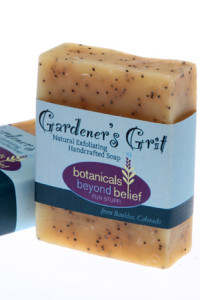Tomato Problem Solving
by Sandy Swegel
OK so only gardeners think of their tomato gardens as paradise, but what a grand time of year this is. In some places, tomato growers are boasting about having ripe tomatoes before the 4th of July. Here in Colorado after a long cool spring, we’re just happy to see them thrive in the heat. But with tomato plants comes the anxiety over pests and diseases. Aphids are having a banner year and everyone is fearful of the psyllids that fly up from Mexico or the early blights/late blights, middle of season blights.
A friend with a bunch of kids compares growing tomatoes with having kids. Parents are so worried about the first-born—you call the doctor at every sniffle. You watch the kid constantly, fearful that impending disaster awaits around every corner. My baby sister wails that when you’re the last kid you have to practically be on fire to get mom’s attention.
As the first born, I am greatly amused by this. But this is no way to grow tomatoes. You’ll go crazy if you try to treat or prevent every affliction. If you can remember last year’s garden, you’ll remember similarly panicking over tomato problems at the beginning of the year. But by September, you had to see the tomato plant in distress from the neighbor’s house two yards over before you thought, “Gee, maybe I should check that plant, the next time I am pulling buckets of tomatoes off of it.”
Most of the time your tomatoes survive the diseases and pests that come at them. Your job is not hypervigilance, but simply creating the best environment to make them strong.
• Good Air Flow.
Air circulation is one of any plants best defenses against disease and pests. Space your plants so they aren’t all crowding one another so that if one tomato does have a problem, it doesn’t instantly spread to everyone else. The market farmers here help air flow on larger plants by pulling the leaves off of the bottom six inches of plants so fungal spores don’t splash up on the plant.
• Adequate and Consistent Water.
Tomatoes thrive when they can count on their soil being evenly watered…and not going through dry as dust or swamp cycles. Put a soaker hose on a timer if you have trouble remembering.
• Food.
As I’m sure you’ve heard before, tomatoes are heavy feeders. If you planted in a big potting hole full of compost or manure and natural fertilizer, that might be enough. Otherwise, you’re going to have to do some feeding to get the big crop of tomatoes you want.
• Tolerance.
Most pests of tomatoes resolve themselves. Flea beetles leave their shotgun holes all over the leaves, but the plant outgrows them. Aphids fester, but in a pesticide-free garden, the ladybugs will usually show up a few days later. Or you can use the garden hose to spray them off. For more serious diseases like viruses, there’s not much you can do this season (just like antibiotics don’t treat colds.) You can pull the plant if it’s dying and start deciding where you’re going to rotate the tomatoes to next year.
• A little bitty bottle of Dr. Bronner’s.
Dr. Bronner’s is pure castile soap and available in little bottles for $2. Mix a couple of drops with water in a spray bottle and that’s enough to treat most pests and fungal disease. Don’t overdo it. And don’t go to the store to get all the chemicals to kill those pests that just end up killing your soil and you.
• Look at websites about tomato diseases.
If you have a healthy environment with air and food and water for your plants and you still see disease you worry about, go in and research it. With any luck, the internet will suck you in and soon it will be dark and it’s too late to do anything today. By tomorrow you’ll forget and by next week your tomatoes will be pumping out tomatoes so you won’t worry anymore.
So just pretend tomatoes are your last kid. You love them just as much and you give them everything to grow healthy and happy and strong, but you don’t hover. Relax and watch the miracle of tomatoes happen in the paradise of your garden.


